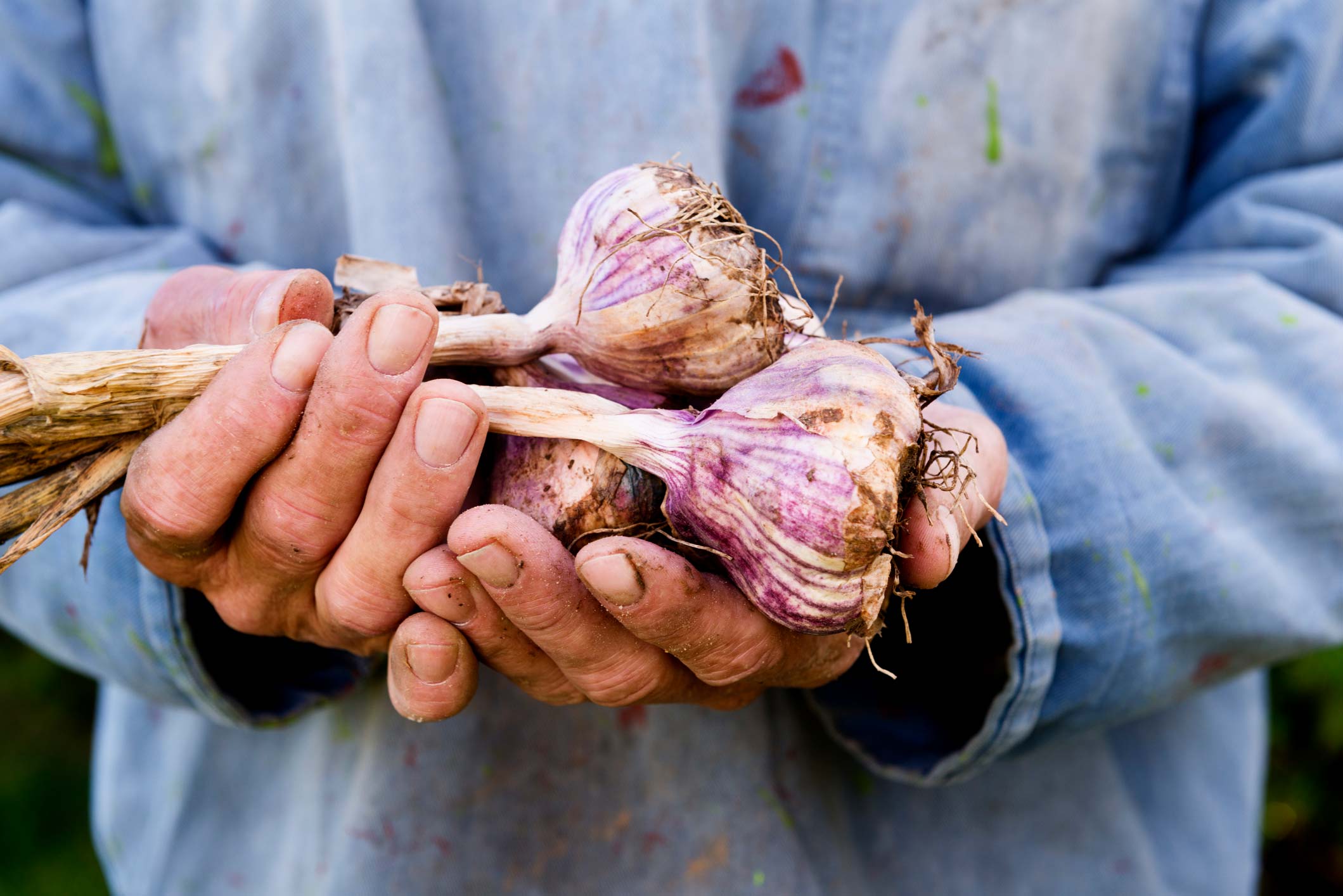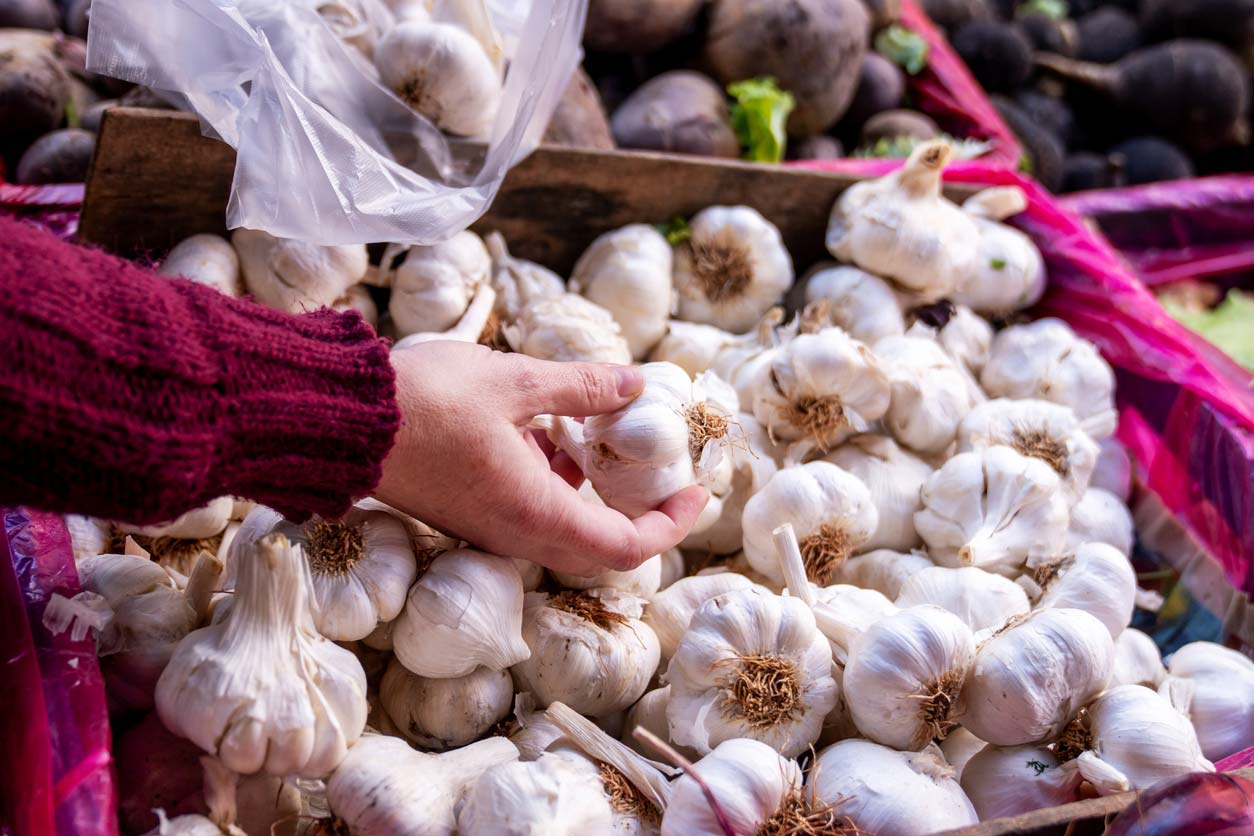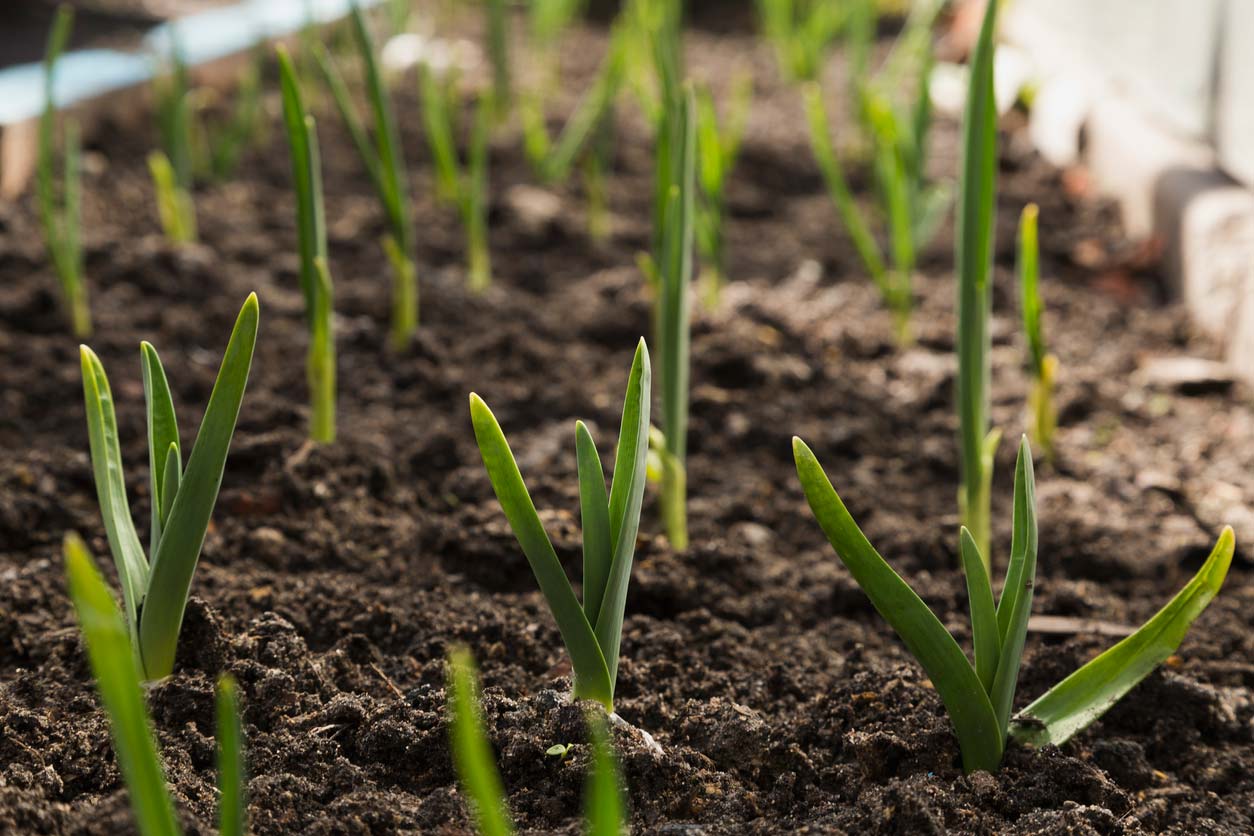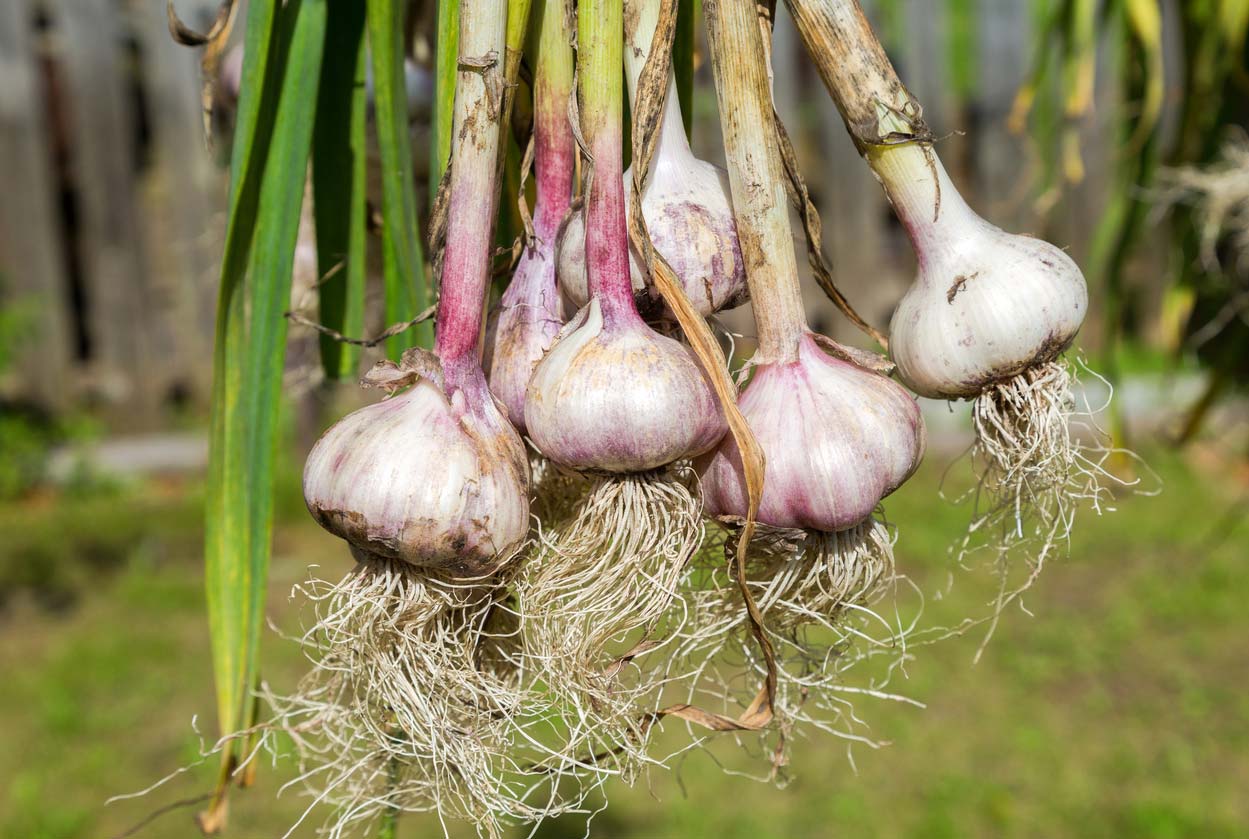Garlic is one of the world’s oldest cultivated crops and has been used for centuries to treat many diseases and ailments. From malaria and meningitis to tuberculosis and typhoid fever, garlic has been recognized as a powerful healer throughout time and in cultures worldwide.
There was even a time when people hoped to cure or ward off misunderstood ‘evils’ with garlic and other alliums. Today, scientific studies are confirming many of these ancient medicinal wards or remedies, even when it comes to vampires. (Alleged vampirism may have actually been rabies. And the legend of garlic repelling vampires may have come from a symptom of rabies, which is a strong aversion to pungent smells!). More on the allium family and some of their extraordinary benefits here.
Of all the alliums, garlic may single-handedly ward off more ‘evils’ than any other vegetable or herb. And whether you’re looking to treat or prevent disease, ward off vampires, or just like the flavor of garlic, growing it yourself has many benefits for your health and vitality.
Why Grow Garlic When You Can Buy It?
Studies show a direct correlation between flavor and the presence of nutrients for many foods. That great garlic flavor is an indicator of allicin — one of the many active compounds in garlic that supports your health.
But grocery store garlic is bred mainly for one thing: shelf life. While this is helpful for food transported hundreds and thousands of miles, the cost of breeding for shelf life is a loss in flavor and beneficial compounds. In addition, there’s not a lot of variety at the grocery store. Stores usually only carry one of three typical varieties. However, when you grow your own garlic, you can choose from over 100 different varieties and flavors.
You don’t need to settle for less nutrition when it comes to your food. You can enjoy superior flavor and health when you grow your own garlic. Plus, it’s easier than you might think!
How to Grow Garlic Full of Flavor and Nutrients
When inviting plants into your life, it’s important to remember that plants want to thrive. They do whatever it takes to grow strong and turn to seed for the next generation. Your role as a caretaker is to provide the best conditions for your plants to flourish. Here are the top eight considerations when growing garlic.
1. Growing Garlic: A Great Choice for Busy Growers
Unlike other annual garden veggies and herbs, most garlic grows from fall through winter and all the way into summer. Growing garlic takes very little maintenance, so it’s great for busy people. Once garlic is in the ground, the only thing you may need to do is mulch before the first frost. Then, curl up with a cup of hot tea and take the entire winter off. That’s right; nothing left to do but wait until harvest in late spring or early summer!
2. Choosing the Right Garlic for Your Climate
Hardneck and softneck garlic varieties can be grown in colder climates. But if you live in a warmer climate, you’ll want to choose a softneck variety. For more on choosing the right garlic variety, grab your complimentary printable Garlic Growing Guide here.
Sow garlic at the beginning of your cool season. Hardnecks need the first four to six weeks of growing to be between 32-55°F (0-12°C). Softneck and warmer tolerant garlic varieties can be planted in warmer temps, but need to be below 80°F (23°C) for the duration of their growth.
Garlic sprouts should be at least 6-8” (15-20cm) tall before temperatures drop below freezing. When sprouts are at least 6” tall, mulch the garlic bed with a light material, like organic straw to protect it through the winter. You can also use mulch to keep the soil cooler in warmer climates.
3. Your Garlic Plants Want 6-8 Hours of Sunlight
Without proper sunlight, your garlic plants cannot photosynthesize properly. Because sunlight hours change through seasons, you’ll want to make sure that wherever you plant your garlic, it is getting 6-8 hours of full sun from fall through summer and up until harvest time. If you live near the arctic circle, this could be a dealbreaker.
4. Quality Soil Means Nutrient-Rich Food
Health starts underground. If growing in a container, choose a high-quality, organic potting mix. If growing in soil, ensure it is well-draining with plenty of fertility. Keep your fertility levels up by adding a 2” layer minimum of organic compost on the top of your potting mix or soil each growing season.
5. How Many Garlic Plants in How Much Space?
You don’t need a lot of growing space for garlic. You can grow enough garlic to savor year-round in one 4’ x 6’ (1.2 x 1.8 m) garden bed. And that one garden bed can give you much more of that cherished garlic flavor than just the bulbs.
Before your garlic head fully matures, you can grab an early harvest with hardneck varieties. Hardnecks produce edible shoots on the top of the plant called ‘scapes.’ Simply cut the scapes when they are between 6-10” (15-20cm) long and enjoy them raw or cooked. They make a delectable addition to sautees!
PRO TIP: In the early spring, plant lettuce between the rows of garlic. Your garlic and lettuce will be ready to harvest at the same time, so you get two crops out of the same space. Plus, your planting bed will be clear to plant summer crops.
6. Watering for Perfect Garlic Harvests
When you first plant your garlic, water weekly until leaves emerge. Then, reduce watering.
If temperatures go below freezing, there’s no need to water during that time. When the ground thaws, water 1” per week in temperatures of 60-70°F (15-21°C) and 2” per week in temperatures of 70-80°F (21-26°C).
PRO TIP: Watering less often and more thoroughly is usually best.
7. The Secret to Getting Superior Garlic Harvests
Harvesting garlic is easy! Your garlic is ready for harvest when lower leaves turn brown and papery. Gently insert a digging fork into the soil and lift out the garlic heads.
But you don’t have to wait until the garlic is mature to start harvesting. Aside from the scapes of hardneck varieties, you can enjoy delicious, fresh, spring garlic by harvesting before maturity and cooking promptly.
PRO TIP: The secret to getting superior garlic harvests is to save the largest, healthiest bulbs for planting next year.
8. Curing and Storing Your Garlic
Once you’ve harvested your garlic, gently brush off the excess dirt. Never wash harvested garlic or get the bulbs wet, as this can cause your garlic to mold. Hang your garlic or lay on a wire rack in the sunlight for two to four weeks, ideally in temperatures of at least 80ºF (26ºC). In colder climates, you can cure your garlic indoors.
Once cured, cut the stems off and peel the outer layer of skin off the bulbs. For optimal, long-term storage, aim for a ventilated, dark, and dry area that’s around 60ºF (15ºC). When garlic cures properly, it will store for anywhere between 4-12 months, depending on whether you’re growing the hardneck or softneck variety.
For more on garlic varieties and growing, grab your complimentary Grow Your Own Garlic Cheat Sheet in printable format from our friends over at GrowYourOwnVegetables.org.
Tell us in the comments:
- Have you ever grown garlic before?
- What are some of your favorite garlic varieties?
Featured images: iStock.com/ClarkandCompany






